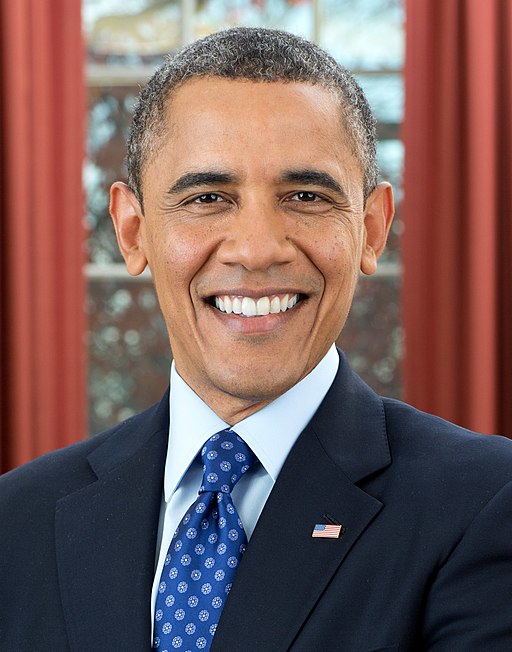Former President Barack Obama warned that the country might not yet be ready to lift coronavirus-related restrictions. While social distancing proved effective in controlling the COVID-19 pandemic’s spread, it is essential to have a system of testing and monitoring in place before they can be lifted.
“Social distancing bends the curve and relieves some pressure on our heroic medical professionals,” Barack Obama tweeted on Wednesday. “But in order to shift off current policies, the key will be a robust system of testing and monitoring – something we have yet to put in place nationwide.”
With his tweet, Barack Obama linked a New York Times discussing how the properly reopen the U.S. without undoing the progress brought by lockdowns and distancing. Public health experts speculate that it is best to do it gradually and state-by-state, taking into account the state’s hospitals capability to treat all potential patients, according to MSN.
The NY Times article pointed out that some sort of guidelines has to be worked out to determine when a state or city is ready to be reopened. “Some cities or states will recover sooner than others,” the article said. “It’s helpful to have criteria by which cities or states could determine they’re ready.”
One factor to look into is that “hospitals in the state must be able to safely treat all patients requiring hospitalization, without resorting to crisis standards of care.” This is to ensure that future patients that might get infected once social distancing is lifted will get proper medical care.
Another factor to take into consideration is that “a state needs to be able to at least test everyone who has symptoms.” In a recent report by health experts Scott Gottlieb, Caitlin Rivers, Mark B. McClellan, Lauren Silvis, and Crystal Watson, the team estimates that the U.S. must have the capacity to run 750,000 tests a week.
“The 750,000 number should be viewed as a reasonable expectation for when we haven’t been having any major pockets or regional outbreaks to manage,” McClellan, a professor of business, medicine and policy and Duke, said. “If more testing to help contain outbreaks and potential outbreaks are needed, which seems very plausible, especially early on, the number would need to be significantly larger. We’ll also have to do some surveillance of people without symptoms, especially in higher-risk settings.”
The third factor that will determine a state’s readiness to be reopened is that “the state is able to conduct monitoring of confirmed cases and contacts.” This is necessary to determine potential COVID-19 cases resulting from having made contact with an infected person. These contacts will then be traced and be put into isolation until they are determined to befree from the virus.
Lastly, “there must be a sustained reduction in cases for at least 14 days,” according to the article. This is probably the best indicator that will show the spread of the virus has been suppressed.



 What are Donald Trump’s foreign policy priorities for 2025?
What are Donald Trump’s foreign policy priorities for 2025?  Robert F. Kennedy Jr.’s Path to HHS Sparks Fierce Debate over Health and Leadership in America
Robert F. Kennedy Jr.’s Path to HHS Sparks Fierce Debate over Health and Leadership in America  White House Tensions Explode as Biden and Harris Reportedly Drift Further Apart After Election Setback
White House Tensions Explode as Biden and Harris Reportedly Drift Further Apart After Election Setback  Health Expert Urges Biden Administration to Act on Bird Flu Vaccines as 'Time Runs Out'
Health Expert Urges Biden Administration to Act on Bird Flu Vaccines as 'Time Runs Out'  Explosive CIA Whistleblower Claims Havana Syndrome Victims Face Cancer, Dementia, and Government Betrayal
Explosive CIA Whistleblower Claims Havana Syndrome Victims Face Cancer, Dementia, and Government Betrayal  Melania Trump’s Plea for Peace Sparks Emotional Reactions Amid Rising Violence Across the Nation
Melania Trump’s Plea for Peace Sparks Emotional Reactions Amid Rising Violence Across the Nation  Trump Makes Bold Move Speaking to ‘Undecided’ Chip Roy Ahead of Crucial Speaker Vote Tomorrow
Trump Makes Bold Move Speaking to ‘Undecided’ Chip Roy Ahead of Crucial Speaker Vote Tomorrow  FDA Approval of Opdivo Injection Sparks Hope for Cancer Patients with Revolutionary Treatment Update
FDA Approval of Opdivo Injection Sparks Hope for Cancer Patients with Revolutionary Treatment Update  Mike Johnson Struggles to Secure Votes as Speaker Race Reaches Critical Moment
Mike Johnson Struggles to Secure Votes as Speaker Race Reaches Critical Moment  What are Donald Trump’s plans for energy independence in 2025?
What are Donald Trump’s plans for energy independence in 2025?  Mexican Government Deploys Hundreds of Lawyers to Defend Migrants in the U.S. Amid Intensifying Immigration Crackdown
Mexican Government Deploys Hundreds of Lawyers to Defend Migrants in the U.S. Amid Intensifying Immigration Crackdown  Trump’s Unexpected Move Shocks Washington as He Confirms Attendance at President Carter’s Funeral Amid Controversy
Trump’s Unexpected Move Shocks Washington as He Confirms Attendance at President Carter’s Funeral Amid Controversy  Why bovine colostrum supplements could be a health gamble
Why bovine colostrum supplements could be a health gamble  Missing Radioactive Material in New Jersey Sparks Panic — Are Drones ‘Hunting for It’?
Missing Radioactive Material in New Jersey Sparks Panic — Are Drones ‘Hunting for It’?  Sport produces mountains of high-tech waste. We are finding new ways to recycle it
Sport produces mountains of high-tech waste. We are finding new ways to recycle it  Biden’s Pentagon Turns to Celebrities in Desperate Bid to Solve Military Recruitment Crisis
Biden’s Pentagon Turns to Celebrities in Desperate Bid to Solve Military Recruitment Crisis 






























